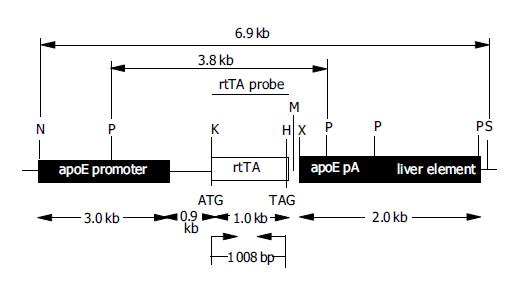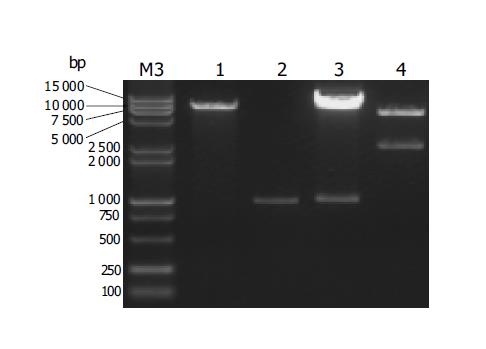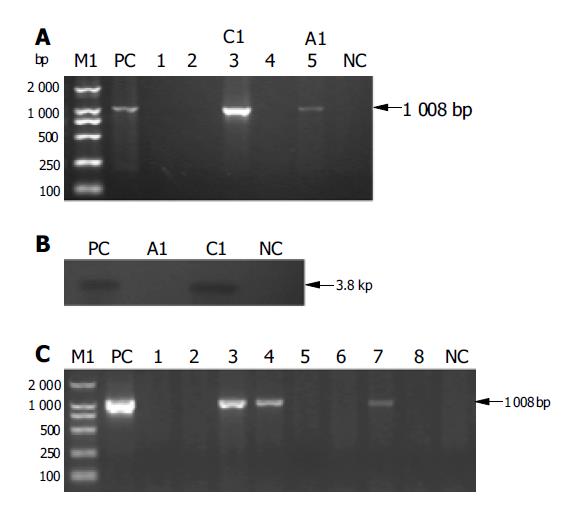Copyright
©2005 Baishideng Publishing Group Inc.
World J Gastroenterol. May 21, 2005; 11(19): 2885-2891
Published online May 21, 2005. doi: 10.3748/wjg.v11.i19.2885
Published online May 21, 2005. doi: 10.3748/wjg.v11.i19.2885
Figure 1 Schematic illustration of the ApoE-rtTA transgenic construct used to generate ApoE-rtTA transgenic mice.
Figure 2 Identification of pApoE-rtTA.
Lane M3: DL2 000 + DL15 000 (TaKaRa); Lane 1: pLiv.7 cut by KpnI and HpaI; Lane 2: purified rtTA fragment; Lane 3: pApoE-rtTA cut by KpnI and HpaI; Lane 4: pApoE-rtTA digested by NotI and SpeI.
Figure 3 Mouse genotyping for the potential ApoE-rtTA transgenic founders (A and B) and subsequent generation(s) (C).
A: Diagnostic PCR results for the presence and absence of ApoE-rtTA gene from genomic DNA of the potential transgenic founders; B: Southern blot analysis for detection of integrated ApoE-rtTA transgene within founder mouse genome; C: Genotyping for the subsequent generation (F1) derived from transgenic founder C1.
Figure 4 mRNA expression in ApoE-rtTA transgenic mice.
A: RT-PCR analysis was performed to examine expression of rtTA in transgenic mouse liver; B: Tissue-specificity of rtTA transgene expression in transgenic animals.
- Citation: Xu K, Deng XY, Yue Y, Guo ZM, Huang B, Hong X, Xiao D, Chen XG. Generation of the regulatory protein rtTA transgenic mice. World J Gastroenterol 2005; 11(19): 2885-2891
- URL: https://www.wjgnet.com/1007-9327/full/v11/i19/2885.htm
- DOI: https://dx.doi.org/10.3748/wjg.v11.i19.2885












